Struggle for survival in the ice: The "Belgica" expedition - nightmare in the Antarctic night
Morten Strauch
· 28.01.2024






- 23 January 1898: Arrival in Antarctica
- March 1898: The "Belgica" is frozen
- May 1898: The fight for survival in the polar night begins
- 22 July 1898: only brief relief with the first rays of sunshine
- 16 November 1898: new mental disorders in the polar summer
- 12 February 1899: hectic breakout from the pack ice
- 5 November 1899: triumphant return to Antwerp
- The route of the "Belgica"
- Reconstruction of madness: The book on the "Belgica" expedition
On 16 August 1897, the barque "Belgica" leaves the port of Antwerp. Countless onlookers line the banks of the Scheldt and cheer the crew of the former whaler. Their mission: to conquer the last unexplored continent - Antarctica.
Led by the Belgian commander Adrien de Gerlache de Gomery, the scientific expedition was also intended to bring fame and honour to the small Belgian kingdom, which had hardly any seafaring tradition and whose coastline measured just 65 kilometres.
The crew of the "Belgica" is a motley crew of mostly inexperienced Belgians and Norwegians. Among them is the still unknown Roald Amundsen, who is looking forward to a career as a glorious polar explorer and sees the voyage as a study trip. The only crew member with polar experience is the American ship's doctor Frederick Cook, who will only come on board in South America.
Defects, scuffles and ground contact at the start of the journey
The heavily laden ship has barely arrived on the North Sea when the "Belgica" has to land in Ostend again due to problems with the steam engine. The first setback for de Gerlache, who feared bad domestic press like the devil fears holy water. But the ship sets sail again and survives the first severe storms on the Atlantic.
In Punta Arenas, Chile, four Belgians, including the cook, are forced to leave the ship after numerous drinking bouts, brawls and an impending mutiny. After another stopover in Ushuaia, the "Belgica" runs aground in the Beagle Channel on 1 January 1898. After a long struggle, the crew managed with great difficulty to free the ship before it was wrecked on the rocks by the tides. Repaired, the expedition left the Isla de los Estados, also known as Staten Island, on 14 January, heading for Antarctica.
During the crossing of the Drake Strait, overconfident crew members snatch some albatrosses from the sky. This is an absolute taboo among sailors, as killing the large seabirds is said to bring disaster. And indeed, a tragedy soon occurs: during a storm near the South Shetland Islands, a Norwegian sailor goes overboard and can no longer be rescued.
23 January 1898: Arrival in Antarctica
On 23 January, the "Belgica" reaches the north-west coast of Grahamland, the northernmost part of the 1,200-kilometre-long Antarctic Peninsula, which points like a finger to South America. In addition to the scientists, Cook also takes every opportunity to go ashore. The American not only acts as doctor, but also as expedition photographer. A small darkroom is set up on board where he can develop his photos, which are still preserved today.
The images of the expedition appear calm, but the background noise is immense
Cook's images convey a strange calm that contrasts starkly with the hostile conditions and the sounds of screaming seabirds, penguins and the roar of calving glaciers.
De Gerlache guides the ship further south through a strait between the mainland and the Palmer Archipelago. The icebergs are an enormous challenge from a navigational point of view. As most of their mass lies far below the surface of the water, they are exposed to the deep current, which can have a completely different direction than the surface current or the wind.
Unknown animals and plants are discovered
The Romanian biologist Emil Racovitza collects hundreds of different plants and animals in a short space of time, which he preserves and many of which are still unknown to science at the time. These included the southernmost flowering plant in the world, Deschampsia antarctica, and a five-millimetre-long, wingless mosquito, which was henceforth named Belgica antarctica.
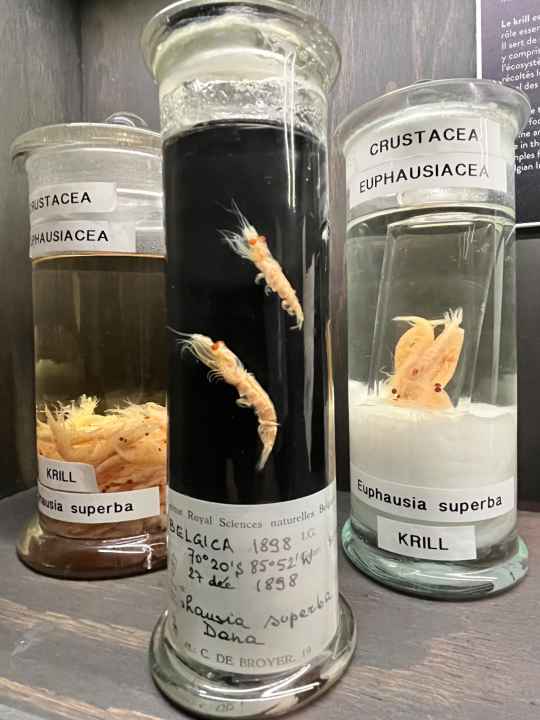
On 12 February 1897, the explorers pass the headland of Cape Renard, which marks the southern end of the Gerlache Strait, now named after its commander. Impressive dark basalt towers rise directly out of the sea into the sky here, so steep that they are free of snow on all sides.
From a scientific point of view, the research trip is already a success, but de Gerlache is aiming higher. Ideally, he wants to reach the magnetic South Pole, or at least set a latitude record. This has been held since 1841 by James Clark Ross, who had travelled as far as 78° 10' south latitude with his ships "Terror" and "Erebus". During the Franklin expedition a few years later, the two ships and their crews were lost in the pack ice of the Arctic.
Neither the ship nor the crew are prepared for wintering
The ambitious de Gerlache is therefore well aware of how risky it is to spend the winter in the Antarctic. Especially as neither the "Belgica" nor its crew are prepared for it. But the commander tempts fate and pushes further and further south despite the approaching winter.
The days are getting shorter and colder and open water in the pack ice is rare. The ship is repeatedly caught in the grip of the sea ice and the tension on board increases steadily. To reassure the crew, the ship's command cheats when stating the width reached.
March 1898: The "Belgica" is frozen
At the beginning of March, the "Belgica" is encased in ice and is to remain so for a very long time. The attempt at an incalculably dangerous pioneering feat begins. Never before had a boat spent the winter in the Antarctic night.
On the last short days with light, the ship has to be winterised in a hurry. The sails are stowed away, the propeller is lifted out of the water and the hull is insulated against the extreme cold with a high wall of snow.
On the last short days with light, the ship has to be winterised in a hurry
By mid-March, the mercury is already 20 degrees below zero, and the trend continues to fall sharply. A boiler is built from parts of the steam engine, which is no longer needed, in which snow is melted to produce drinking water. A hole is hewn in the ice right next to the "Belgica" and kept clear at all times. On the one hand, in order to have water to extinguish a fire quickly should the ship catch fire. On the other hand, for fishing.
At first, there is a lot of hustle and bustle, as the men find stability in the routine of their work. As the autumn days grow darker, however, they increasingly shirk their tasks or stay in their bunks.
May 1898: The fight for survival in the polar night begins
In mid-May, the sun sets for the last time before the three-month night falls. Incessant, raging storms threaten to destroy the men's only refuge and tug at their nerves. The crunching, cracking sound of ice on ice or, worse still, ice on the wooden hull makes it clear at all times that they are helplessly exposed to the merciless forces.
During the long polar night, the crew's condition deteriorates rapidly. Dizziness, rheumatic pains and cardiovascular problems join the mental depression. De Gerlache barely shows his face and sinks into a depression.
Cook, on the other hand, knows how to keep himself busy. He takes photographs, writes and tinkers with his polar equipment. The result is a sailable sledge, for which he makes a set of sails from bed sheets. His remarkably cheerful disposition makes him almost immune to despair. As his mates call on his help almost constantly, he is the busiest and most popular man on board.
Roald Amundsen wants to learn and toughen up
Amundsen seizes every opportunity to expand his abilities and increase his capacity for suffering. "Suffering and achievement" is his motto. Together with the ship's doctor, he undertakes risky land expeditions, forming an enduring friendship.
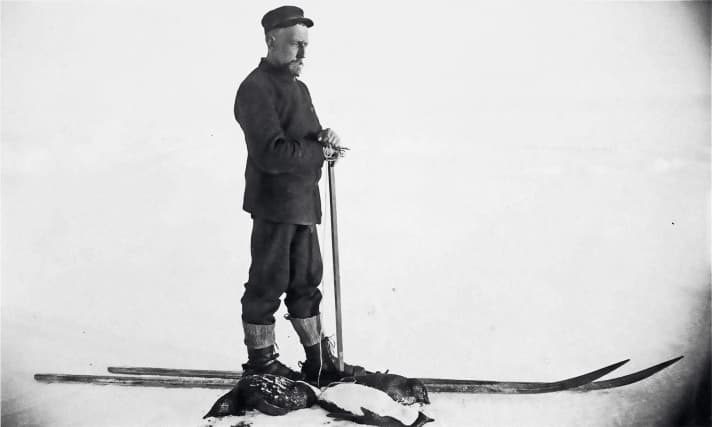
On 5 June, de Gerlache's loyal friend Émile Danco dies. Sewn into canvas, the geologist was weighed down two days later and thrown into the sea through an ice crevasse. De Gerlache was plagued by strong feelings of guilt, as he had steered the ship further into the ice against the advice and will of his scientists, for better or worse.
Little by little, the "Belgica" resembles a madhouse
Cook fears that more men will soon die and makes desperate attempts to keep his comrades alive. To give them light, he has them strip naked and stand in front of a bright stove fire. He encourages the men who are still able to walk around the ship in an endless loop. Little by little, the "Belgica" resembles a madhouse.
Raw penguins and seals against scurvy
When the ship's doctor realises that the preserved lime juice must have lost its effect and the crew is suffering from the dreaded seafaring disease scurvy as a result, he recalls his experiences from the Arctic.
No symptoms of scurvy were recognisable in the Inuit, even though they did not know citrus fruits or sauerkraut, the ingredients of which are known to help against the insidious disease. They fed almost exclusively on fresh meat from whales and seals - preferably in its natural state. Apparently sufficient protection against scurvy.
So Cook orders the crew to eat fresh penguin or seal meat every day, recommending that they eat it as raw as possible. Gradually, the men overcome their disgust and are won over by Cook's healing methods. Their health improves somewhat.
22 July 1898: only brief relief with the first rays of sunshine
When the first rays of sunlight illuminate the mastheads of the "Belgica" around 22 July, there are no more fatalities to mourn. But the crew members are greying, bloated and yellowish in colour. The flicker of hope is short-lived. The men soon fall back into depression and fear.
In August, a sailor goes mad and reveals a desire to kill. The men also suffer an inexplicable physical relapse, despite eating penguins. When another sailor falls ill with paranoid anxiety shortly afterwards, everything seems to get out of hand.
16 November 1898: new mental disorders in the polar summer
On 16 November, the polar summer finally begins and will last for more than two months. Cook had believed that the return of the sun would have a healing effect on the crew, but the opposite is the case. If the men could hardly get out of their bunks during the winter, they are now suffering from insomnia and new symptoms of mental disorders are appearing.
Fearing a second hibernation, the crew made desperate attempts to free themselves from the icy grip. Test blasts with tonite rods are just as ineffective as a trench system designed to accelerate the melting of the ice in front of the ship. Finally, the exhausted men set about sawing a navigable channel out of the ice - from the stern of the "Belgica", where the ice is thinnest, to the nearest open water 700 metres away. A mammoth project that motivates them. Positive energy through physical labour, plus lots of penguin meat, and all under the never-setting sun.
But after a month of hard work around the clock, with the canal nearing completion, a large crack suddenly appears alongside the ship, displacing the ice masses and closing off the escape corridor. In an instant, all hope is gone and with it the budding morale.
12 February 1899: hectic breakout from the pack ice
The miracle of liberation comes unexpectedly. On 12 February, the pack ice begins to break up and the men feel the waves of the sea on the ship for the first time in almost a year. The banks of the canal also begin to drift apart. De Gerlache immediately orders the ship's engine to be brought out of hibernation.
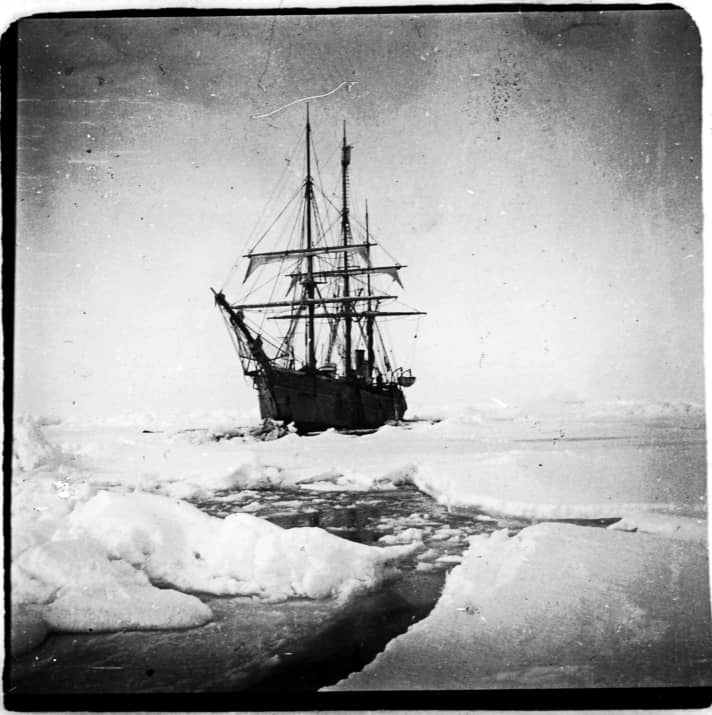
As the "Belgica" is still trapped in a block of ice, this encasement must be blown away as quickly as possible before the escape route closes again. The risky operation succeeds without perforating the hull.
As the mouth of the canal is now iced over again, there is no other option but to blast a basin free so that the ship can turn round and then break through the ice barrier at full steam. As all the channels run from west to east, the "Belgica" fights its way westwards, using the stern repeatedly as a battering ram.
Penguin carcass as a fender
The closer she gets to the open sea, the smaller the ice floes become, which are thrown against the hull with full force by the swell. Penguin carcasses are hung over the railing to cushion the hard blows to the wooden planks. The animal fenders soften the impact of the ice floes until they themselves are crushed to a pulp. Macabre, but effective. Larger ice floes are blown up. Nothing else can go wrong.
They finally managed to escape from the icy prison and set course for Punta Arenas, where the "Belgica" arrived on 28 March after another near-disaster off Cape Horn.
5 November 1899: triumphant return to Antwerp
On 5 November 1899, the men received a triumphant welcome in Antwerp. The fact that de Gerlache had not succeeded in setting a southern record or reaching the magnetic South Pole was irrelevant. The expedition had mapped unexplored polar regions, made valuable scientific observations and survived the Antarctic winter - all pioneering deeds in the name of Belgium. King Leopold made all the officers and scientists Knights of the Order of Leopold, the country's highest honour.
The golden age of polar research began with the "Belgica" expedition. While Amundsen became a celebrated polar explorer over the next few years, his friend Cook was convicted of multiple frauds and even ended up in prison. The "Belgica" serves as an explosives depot in Norway during the Second World War and is sunk in 1940.
The route of the "Belgica"
Failures, bad luck and mishaps accompany the "Belgica" from day one. Nevertheless, a wealth of scientific discoveries were made and unexplored regions of West Antarctica were mapped. In addition to a strait named after Commander de Gerlache, several islands are named after Belgian cities and regions. The mainland side of the Gerlache Strait is named after the late geologist Danco.
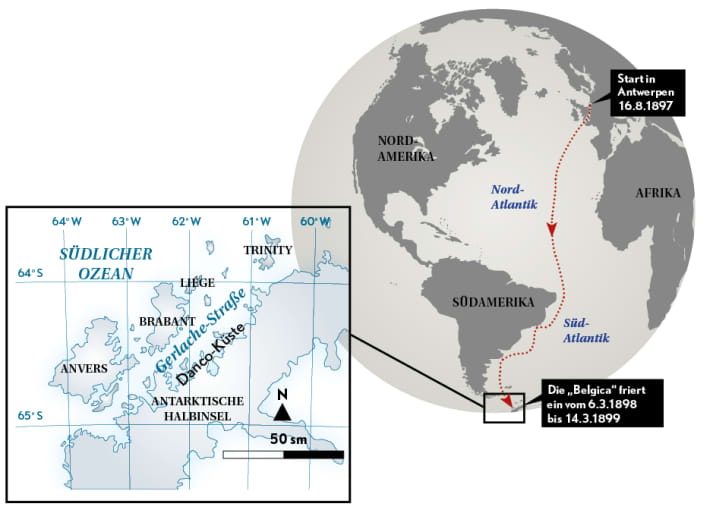
Reconstruction of madness: The book on the "Belgica" expedition
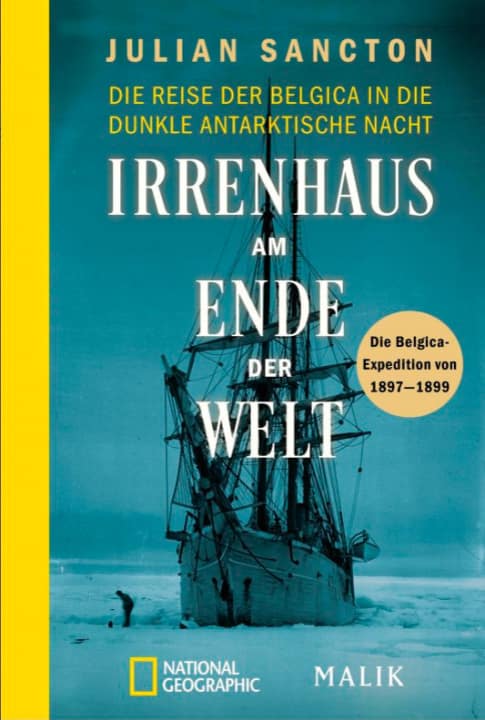
Thoroughly researched and told like a film: In his detailed book, Julian Sancton reports on the forgotten chapter of polar exploration. Published by Malik/Piper Verlag.

